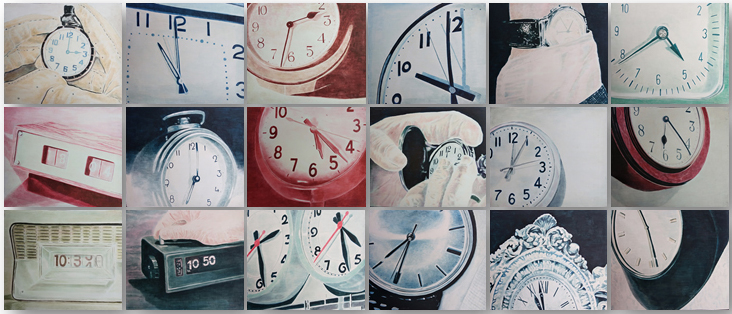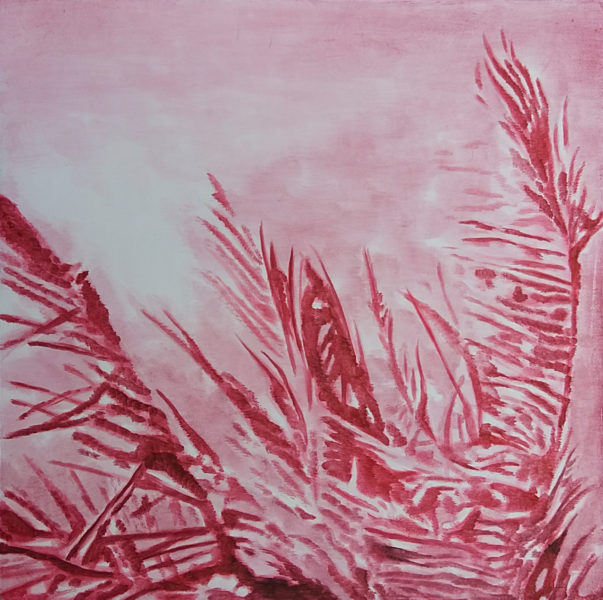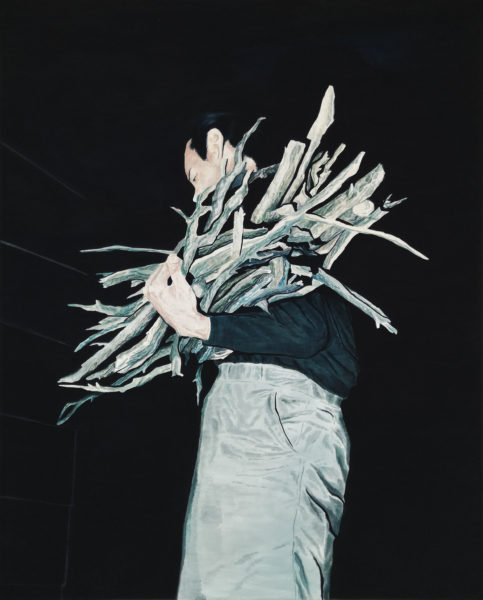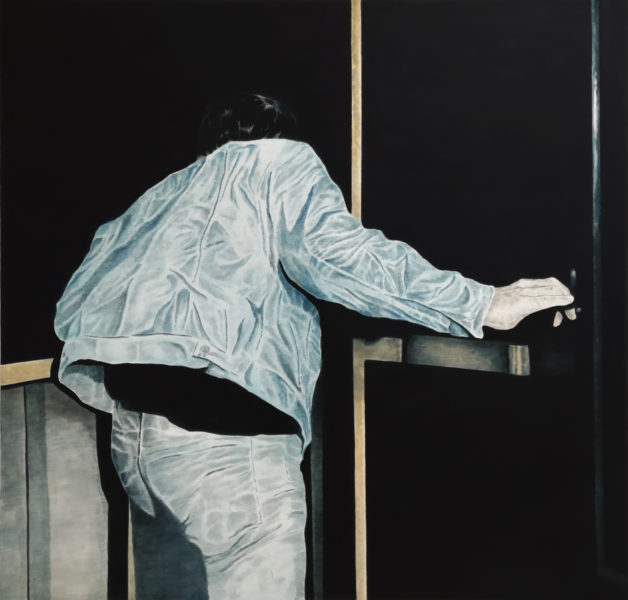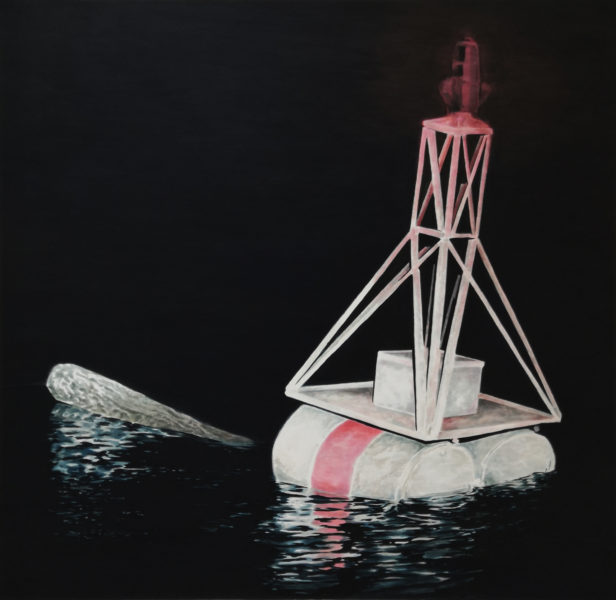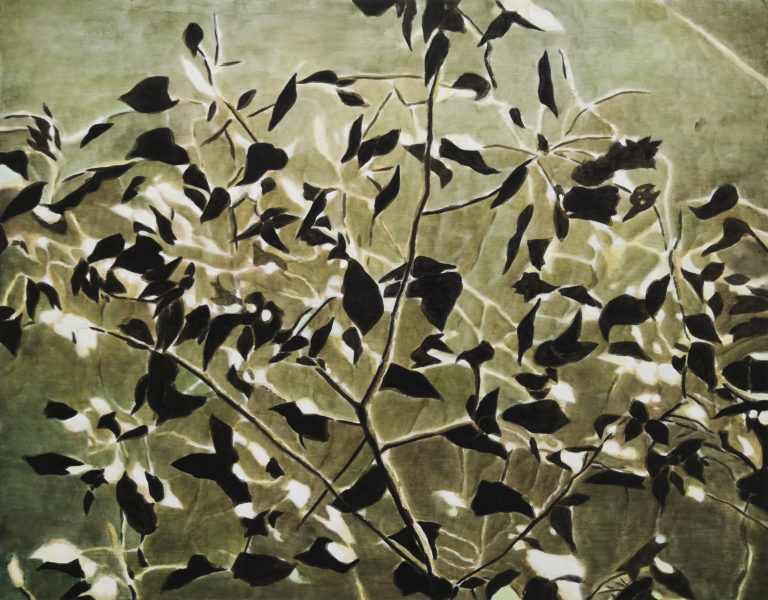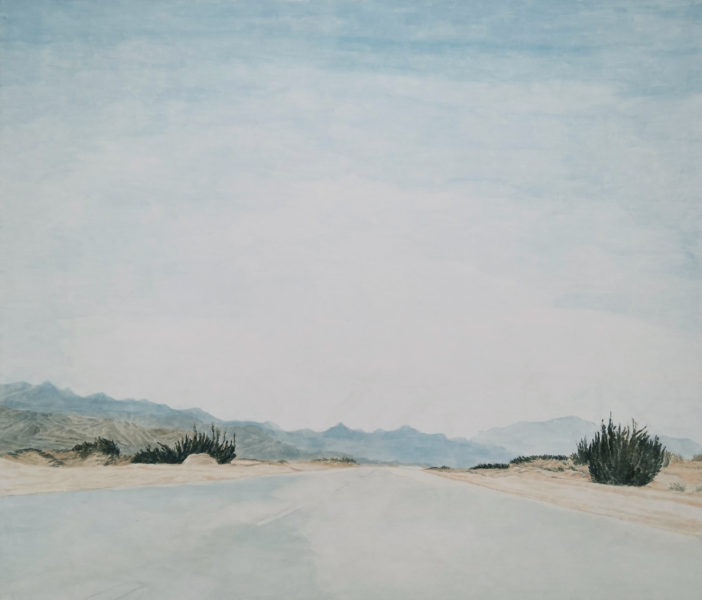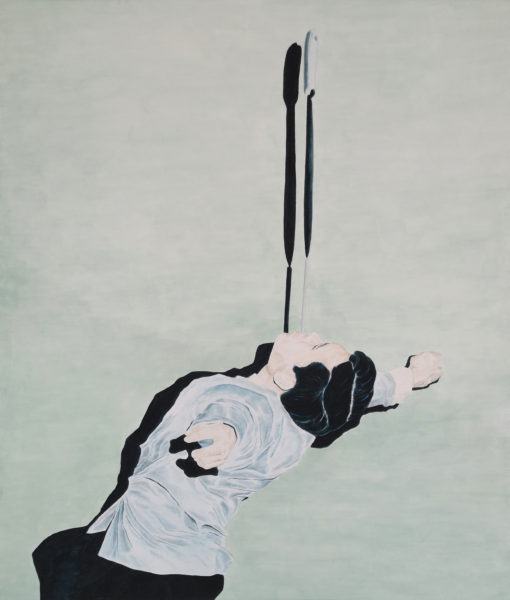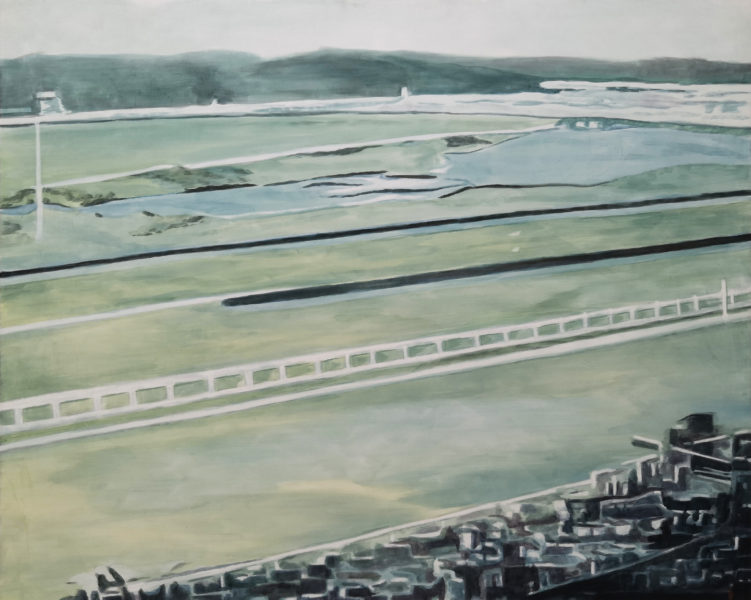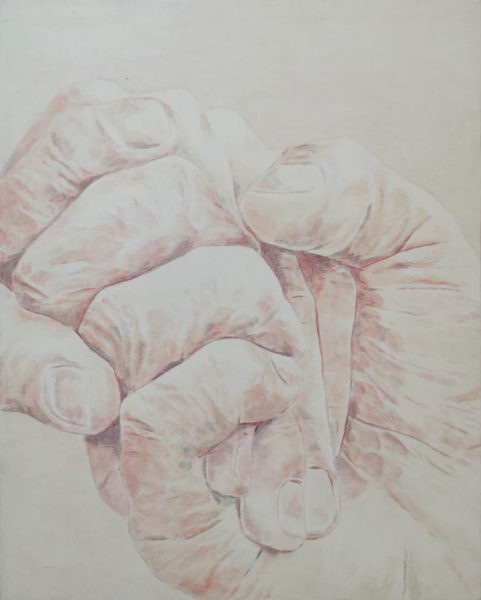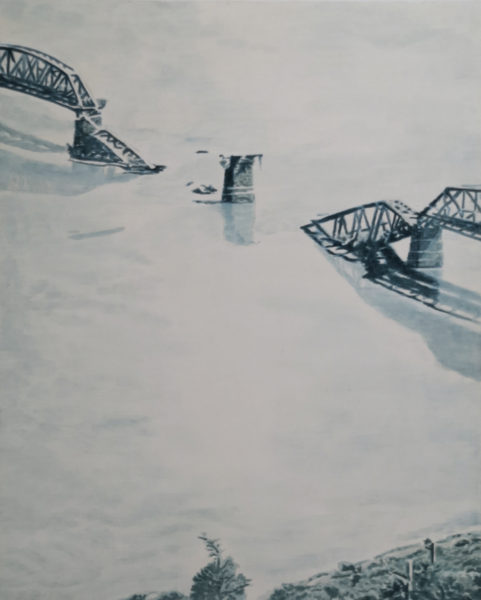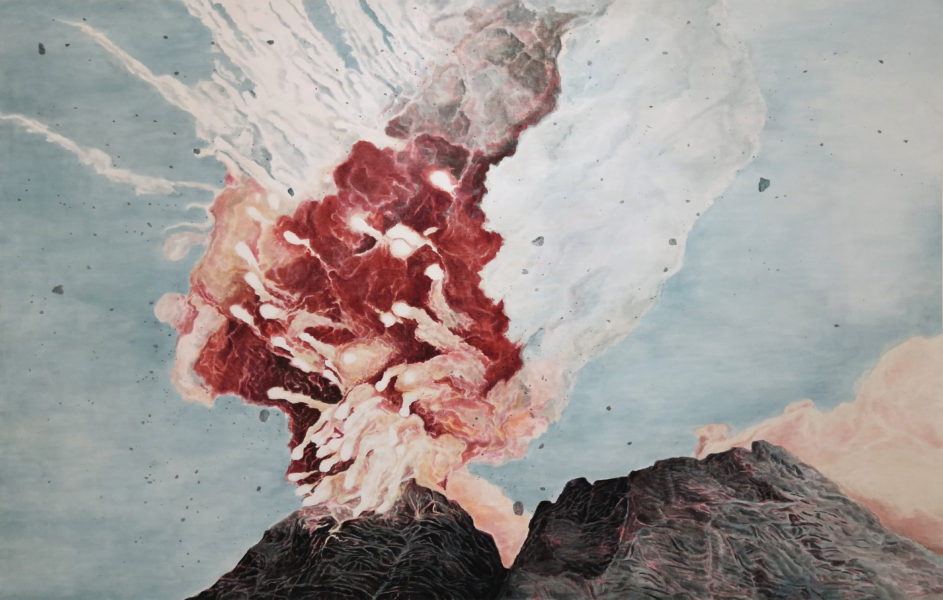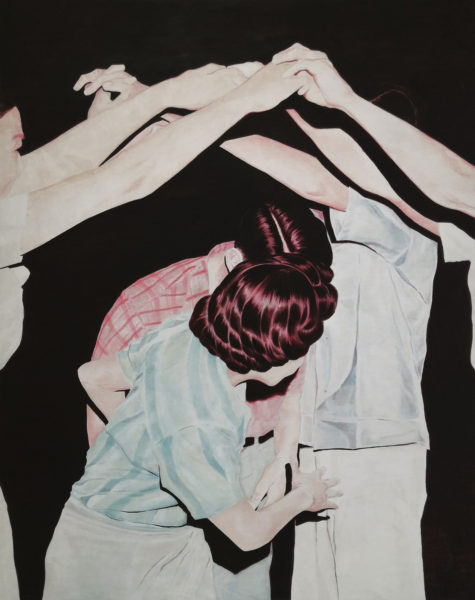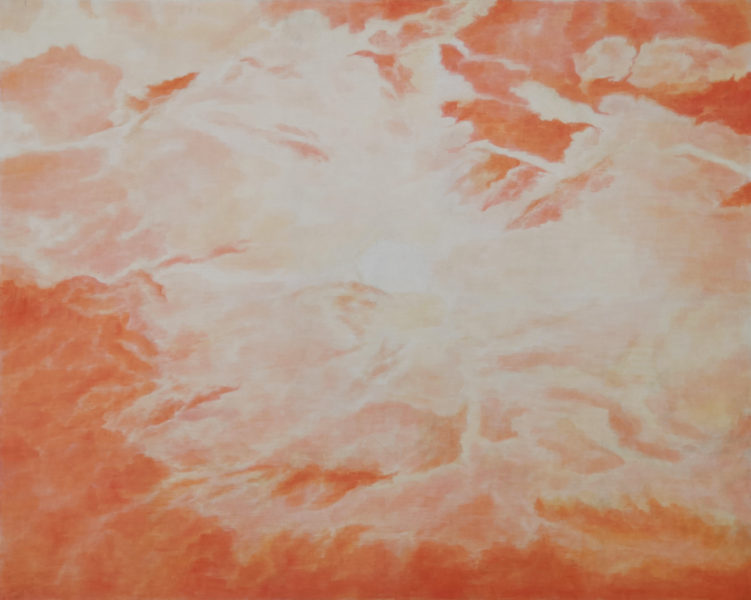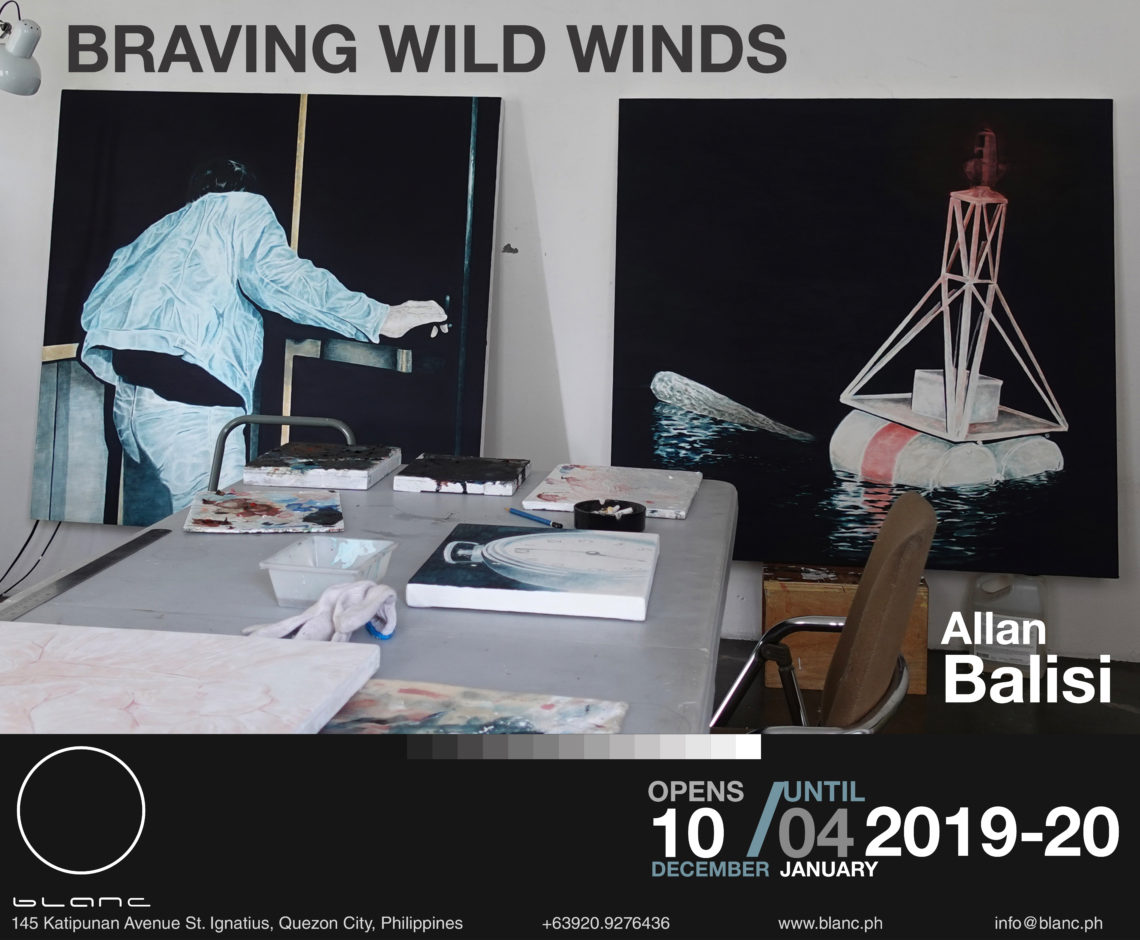
How Not to Romanticize Resilience, Resistance
Notes on Allan Balisi’s Braving Wild Winds
by Con Cabrera
When I interviewed Allan Balisi about his current exhibition, he talked about the three stages of painting: what is personal, what you want to say, and what the viewer understands. This concept makes me think about the three rubrics of an exhibition: here I am, here we are, and here you are. Jacques Ranciére explained that achieving this dynamics transforms us viewers into witnesses “to an original co-presence of people and things, of things between themselves, and of people between themselves.” In the text[1] where Ranciére stated this, he also elaborately explained the three forms of ‘imageness’: naked, ostensive, and metamorphic. I cling on to this literature as I do a close reading of Balisi’s body of work because ‘image’ was central in our conversation, and evidently enough, fundamental in his philosophy. He questions its existence, purpose, trajectory, malleability, relationships, reception and presents them in his distinct artistic style and laborious creative process.
The Naked Image
Because Balisi has transformed his interest in film and photography into implements for his art practice, he has created for himself an exclusive landscape made of B movies, found old photos, vintage magazines, and comics. He also has crafted a navigating system that challenges his patience and sharpens his aesthetic preference. He has generated quite a number of screen captures and clippings, which he uses as painting references. The process of searching is long and tedious at times, but also a source of excitement and joy. In 2018, he released a zine titled Painting Study: Passing of Time. It’s a compilation of cropped photos of hands in some form of action with a running text Balisi wrote as an articulation of his contemplations on man’s movements and pauses…
“so tell me – what do revolutionaries do these days?”
Opening with a probe, it is poetry that acknowledges the resemblances of the transience of time and hand gestures that express affection, love, regret, character, weakness, faith – our journeys. The naked image’s sole intention is to aim beyond what is present, that is a manner of witnessing. It took the artist a long time in choosing the reference image for the painting Thousand Rays. He looked into disaster movies in different eras to find the appropriate freeze-frame of an erupting volcano. It is labor dedicated to presenting us the slowness of an outburst, akin to a subtle building up of rage or anger. This extensive process of searching constitutes a substantial portion of Balisi’s work. There is attention to the accountability on deciding what he wants us to witness.
The Ostensive Image
“As a marking on safe waters between dangerous waters, in the last possibilities of light challenge the viewer on unknown position: the dangerous water or the safe water. It’s also a commentary not only to myself but to the viewer as well, to take risks or to stay in the comfort zone, but the title suggests going further. To take courage around the present, not the past or the future, around destruction and creation, not stasis.”
These were words written by the artist as notes on paintings In the last possibilities of light (dwell) and In the last possibilities of light (haul). As Ranciére explained the ostensive image, he mentioned about the power of a face-to-face – facingness. He says that in facing the spectator, images have an obtuse power of being-there-without-reason and that somehow they “become the radiance of the face… as the gaze of divine transcendence.” This influence though creates for us the arcane bliss in viewing art, complemented by the process of discerning and conversing that happens in between. Balisi’s paintings confront us – face us – into action or meditation. They speak to us in isolation just through their material presence.
Since the ostensive image is entitled to be art, the assertion by its sheer presence and ability to conjure meaning is acknowledged. The painting Burning Maps is about revolution as a gateway to a secret world where the existing world is burnt away to reveal what’s beneath. The artist is thinking about the nobility, necessity, and beauty of the collective action to achieve it. It is a forewarning to expect resistance. Through the transformation of a naked image into the ostensible, the insinuations are read via Balisi’s context, his ideologies, and progressive thought.
The Metamorphic Image
The Gap is a series of clock paintings uncovering Balisi’s fascination with the repetitive pattern of movements. For him, this echoes the process of his work and daily life. He chose the word gap in the title to draw our attention to a clock’s cropped dials, but also the idleness of images.
“How many times will we remember a certain afternoon of our childhood, some afternoon that is so deeply part of your being that you can’t even convince of your life without it?” the artist asks. “Perhaps four or five times, perhaps not even? How many more times will you watch the full moon rise? Perhaps twenty… and yet it is all limitless”
-Sheltering Sky, Paul Bowles, 1949
Days Braving Winds is a similar figuration inquisitive on the idea of balance and going against the movement. The power of the metamorphic image as art can be summarized in the exact opposite of ‘voici’ (here is) according to Ranciére. It is the ‘voila’ (there it is/there you are). He also burdens the artist with the critique of the image, as it is “no longer framed in an autonomous history of forms of history of deeds changing the world.” There is no need to demystify it, “play with the forms and products of imagery,” he instructs. As Balisi’s person in the painting balances a knife, he reminds us of the interface of a clock with its body composition, stationing us – the world – in a pause. Anchored Dial, Moving Hands is a lover’s painting based on a photo the artist found while browsing through hospital photos from universities. A capture of a playful event, Balisi sees this as an image of a broken bridge. Here he attempts to illustrate a breach and conflict of information. In his notes he wrote:
“its an image destined to create a new meaning, or to reconstruct human relations if we can’t even get along with each other in the attempt.”
He wants to focus on moments, but moments change so fast, constantly. The reconstructions of images to artworks using painterly conditions make them unclear, imprecise, with more inconsistencies.
Braving Wild Winds
This exhibition is a glance into a segment of Allan Balisi’s private landscape with a volcano, the rain, sky, seasons, branches, light, the sun, leaves, wind, and trees coexisting with a whole other universe of imageries. He often thinks about the significance of having an image bank given the existence of the Internet, art, books, etc., in this time of fake news. As we continue to fall blind and be deceived by pictures used in platforms such as advertising, it’s so easy and convenient to misinterpret. As an artist, he feels that this is hard to resolve, especially in the medium of painting. This is where the role of titles comes into play and influence the development of informed viewership. He gives importance to and also relies on words that accompany or articulate his ideas and images, maybe because of the often-filmic origin of his images. Even as he acknowledges the autonomy of the image, he hopes to communicate to the audience most intimately and tenderly, where the length of time does not matter.
Within the interconnected micro-narrations of surviving, retreating, taking shelter – exhibiting values of resilience and resistance, the overarching ambition I see here is to achieve the double metamorphosis image. To emphasize the “dual nature of the aesthetic image: the image as a cipher of history and the image as an interruption.” To not lose ourselves, Balisi prompts us to radiate the power of our shared history, our stories that are contained in images…
“like finding reassurance on familiar hands on our skin,
or a kind loving gesture, or a subtle encouragement,
or a loving embrace.”
[1] Jacques Ranciére, ‘Naked Image, Ostensive Image, Metamorphic Image’, from Le Destin des Images (Paris La Fabrique, 2003;) trans. Gregory Elliot, The Future of the Image (London and New York: Verso, 2007) reprint Ed. Julian Stallabrass, Documentary: Documents of Contemporary Art (London and Cambridge: Whitechapel Gallery and The MIT Press, 2013)
Works
Documentation







